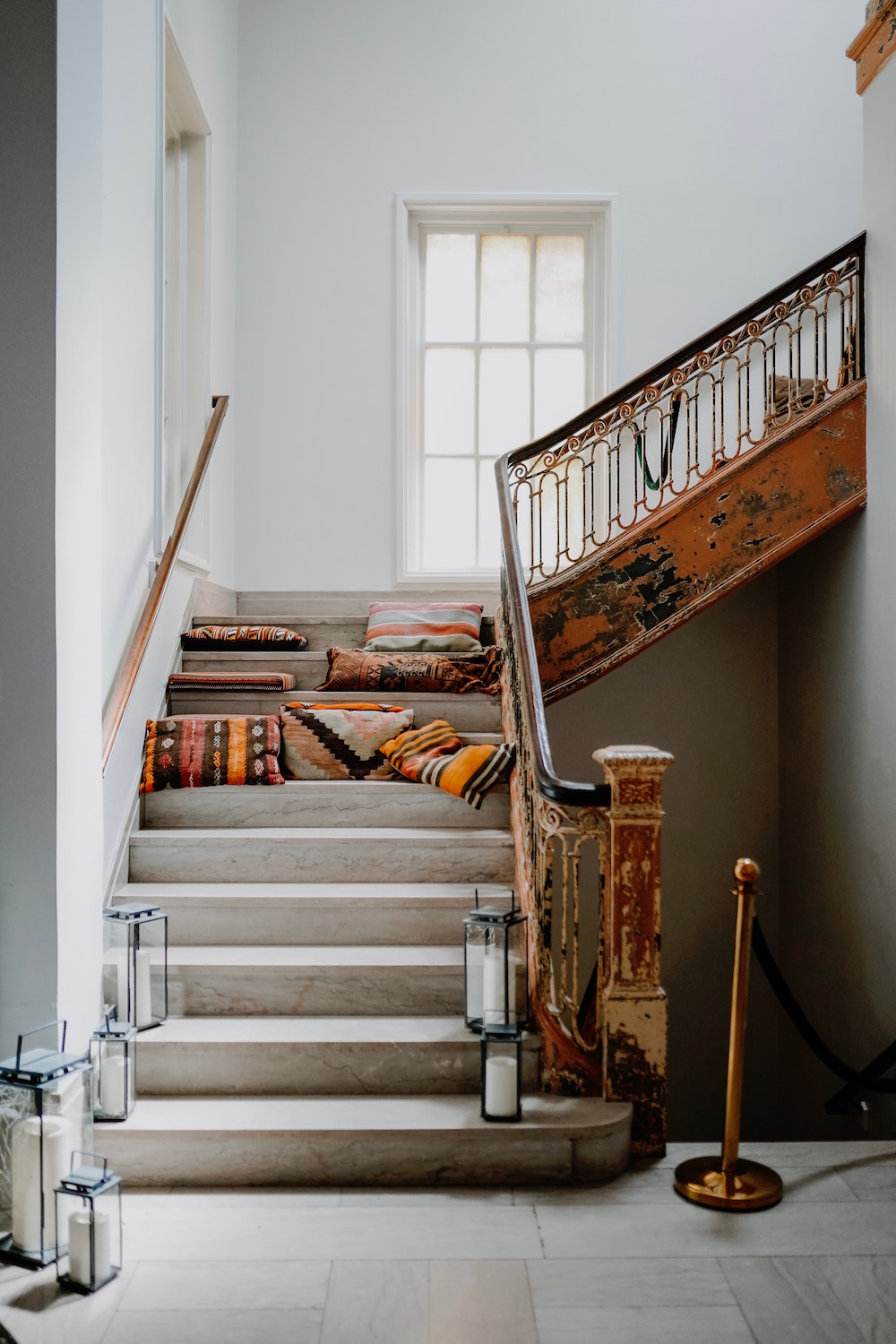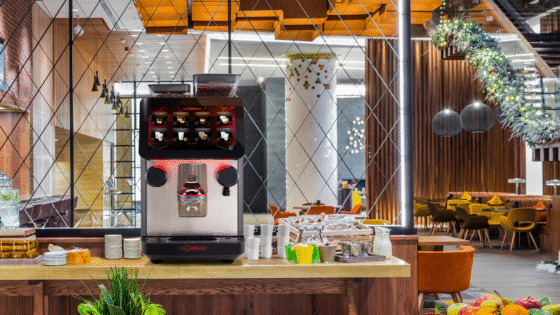To kickstart ‘public spaces’ being placed under the editorial spotlight this month, Emma Cook takes the reigns to explore how the pandemic will evolve hotel lobbies, hotel arrival and the hospitality experience in general once more…
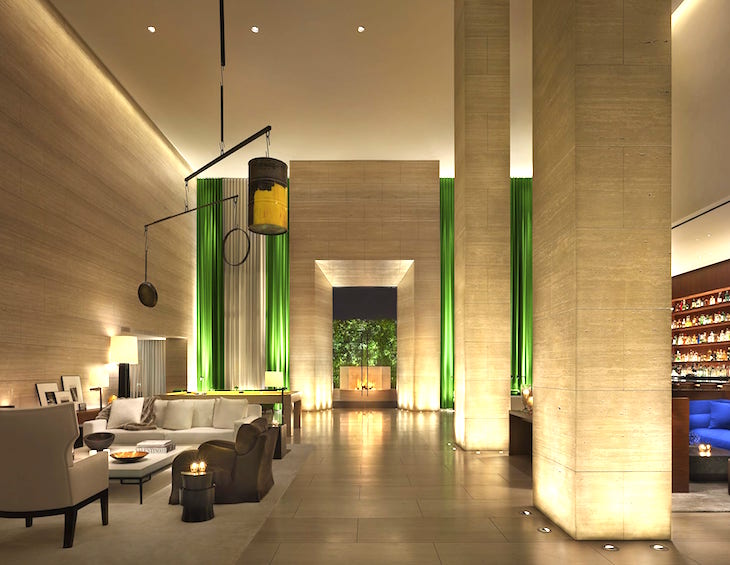
Hotels: the home away from home. Except, now, we want to be anywhere but our homes! Endless lockdowns have left people craving to escape the confinement of their house, and where are modern travellers desperate to escape to? Hotels is where!
Since the late 1980s, unique experience in hotels has taken over, and the desire to have an authentic experience has changed the way in which hotels are designed. Travellers becoming more savvy – and just general interest in culture – has seen hotels use the local vernaculars as concept for their design: both physical and experience. Brand standards are slowly being taken over by distinctive boutique hotels which encapsulate the local identity – creating a more immersive experience.
- Image credit: Unsplash/Chesley Mccarty
- Image credit: Unsplash/Thanos Pal
The experience of a hotel is arguably more influential than the design when creating repeat business; although, the two go hand-in-hand. When you enter a space, you don’t remember the colours of the flooring or the warmth of the lighting, instead you remember if you felt excited, uncomfortable or inspired. One can appreciate a great looking hotel on Pinterest, for example, but when they walk into that same hotel in real life, the feeling they get may be completely different. Design becomes experience when the senses are stimulated. Touch, sound, and human interaction are all part of the design experience and can completely change the way someone feels in the space. However, in the face of Covid-19, how will the lack of touch and interaction impact the hotel experience?
More often than not, designers and hoteliers are aiming to achieve a sense of the hotel’s brand and ethos when guests enter the building. If the public spaces are particularly open plan and airy, the space will feel sociable and will have a ‘buzz’ about it. On the contrary, if a hotel has more corridors, soft music, and a luxurious feel, you could hazard a guess that it will probably be an older demographic with more middle-class desires. This initial representation comes in the service too; a long marble check-in desk compared to a person carrying a tablet, both give off a very different ambience. Once hotels can open to the public again, it’ll be interesting to see which types of hotels people are more drawn to. The open plan and social hotel may now be stark and empty whereas the more private hotel may feel too much like being back in lockdown.
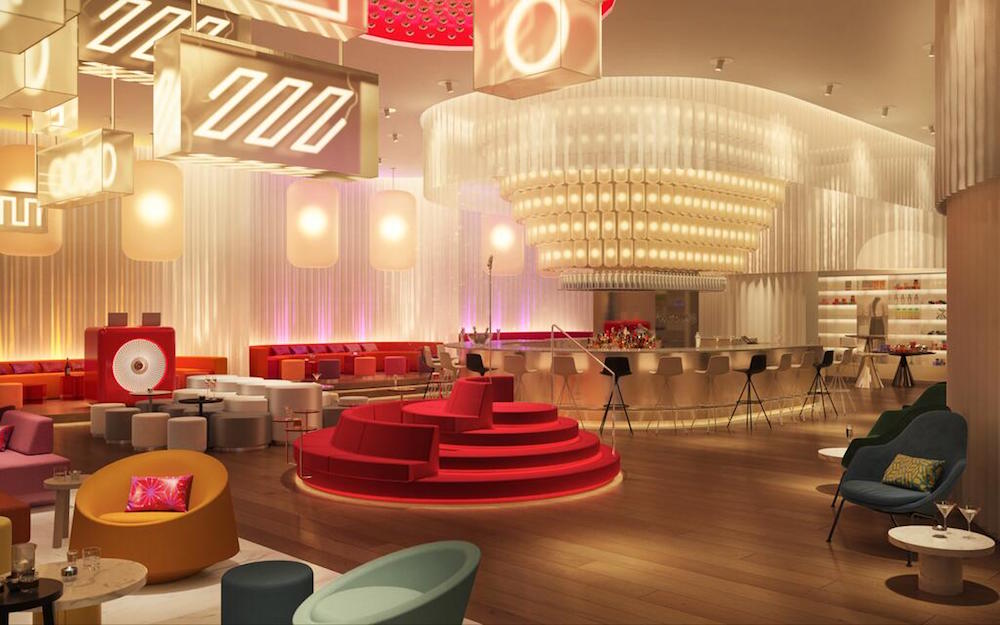
Image caption: Stylish interior design scheme inside W Osaka, conceived by Amsterdam-based studio concrete
In the last decade, the amount of human contact we get has reduced massively. Thanks to technology, everything can now be done and ordered at the touch of a button. Since Covid-19, the importance of human connection has become very apparent, and we may see a reversion to more face-to-face service by choice of the guest. There is a strong argument between the convenient hygiene of self-check-in stations vs. the sought-after human interaction of desk staff. The flexibility of allowing the guest to do what makes them feel more comfortable will make for a successful hotel check-in experience.
Hotel public spaces host a wealth of activities: arriving, waiting, working, meeting friends, eating, and departing. Factoring flexibility into the design can give space to these activities and allow them to cohesively work in one room to fulfil the needs and wants of guests. Larger, more flexible spaces also allow for more people in one room, whilst maintaining a safe distance. This retains the social aspect that guests will crave yet continues to keep them safe. Creating lots of small breakout spaces will make potentially longer waiting times feel more pleasant but also creates places for people to grab a coffee or work. Savvy designers may be able to manipulate human traffic within the spaces by creating subtle boundaries. A simple change in lighting or furniture can define spaces and flooring materials can create ‘pathways’ for guests to subconsciously follow. Gone will be the days of ‘one way’ signs and ‘2m apart’.
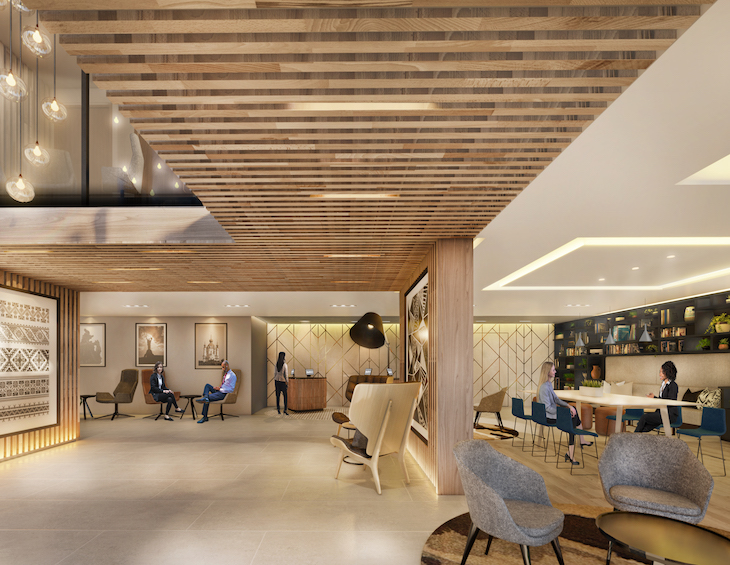
Image caption: A hotel concept in Kyiv, conceived by ADP Architecture with the aim to create a deeper connection with the local vernacular.
Hygiene will be at the forefront of hospitality design. After being cooped up in the safety of their own homes, people need to feel comfortable in knowing that the place they are staying is clean. However, being surrounded by service people cleaning 24/7 wont exactly create a warm and inviting environment. Minimalism tends to give off a sterile aesthetic which can lead people into thinking the surfaces are cleaner than they look – this comes with both materiality and form. Brass and other copper alloys have antimicrobial properties and materials like these, that not only look amazing but also help tackle some of the bacterial issues, can be used at touch points like handles and railings. If people feel safe in an environment, they will feel more comfortable engaging with others in the same room, increasing sociability and the overall experience.
Ventilation is key and hotels with open spaces are bound to do well in the future. Whether it’s a courtyard, outdoor eatery or a guestroom balcony, people want to know that the air around them is fresh and clean. Greenery in indoor spaces is an easy way to make a room feel fresher and cleaner, even if it’s not, and planting can also be a way of dividing spaces and creating clear pathways. Architectural science may see a big movement into breathable technology. Long gone will be air conditioning; façades that can breathe and act like skin will become the new way of ventilating and cooling/heating a building.
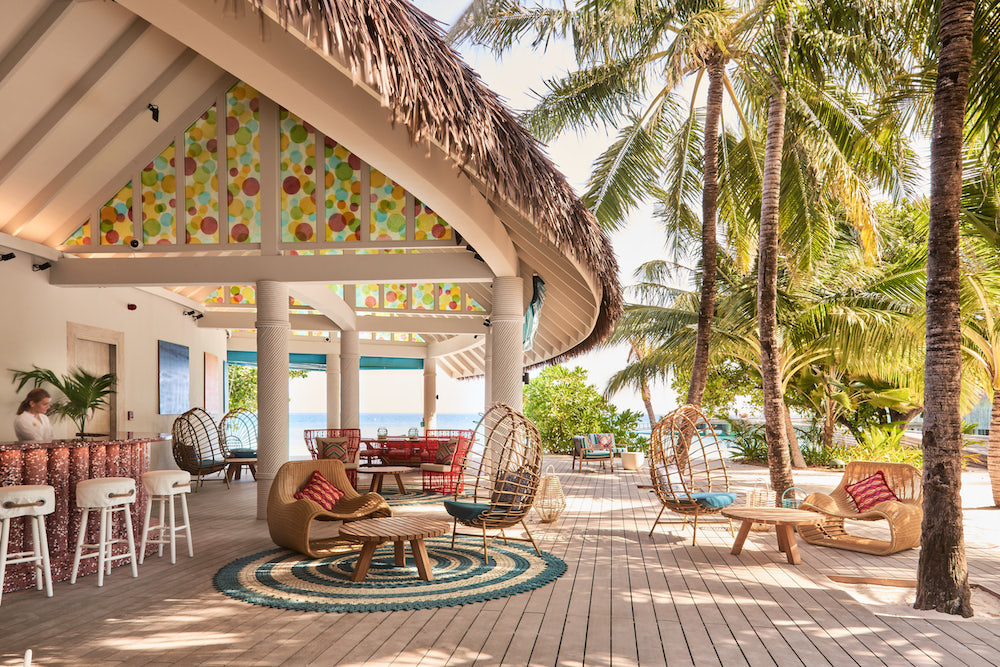
Image caption: An open-air public area experience at Seaside Finolhu in the Maldives, conceived by Muza Lab. | Image credit: Seaside Finolhu/Brechenmacher & Baumann
More than ever, people are aware of their own personal wellbeing and the idea of routine will be extremely important for a lot of people now. Hotels can take inspiration from Japanese architecture which implements ritualistic elements into design which has been proven as an architectural way to increase mental wellbeing. Simply adding a few wash basins to the entrance of a hotel lobby can incorporate ritualistic elements to the design and let guests know that the hotel is a clean space. The sinks don’t need to look unsightly either, the Address Hotel, Dubai Marina, has beautiful sinks which are a feature of the entrance.
After a year of lockdowns and restriction, people have become very adapted to working from home and communicating through virtual means. Those who once travelled for business may not need to anymore yet flexibility in where people can work from may increase numbers of remote workers. Meeting rooms may become dormant as working from the bedside is the new norm and an increase in communal workspaces will be required. The flexibility to choose where to work from will be high on the priority list for remote workers and they will be looking to enjoy working from a poolside, quiet café, or lounge seating area. Although hotels should not want to become the new workplace, in fear of jeopardising leisure travellers’ experience. Will a new generation of workplace hotels be born, as a result, to keep definitive boundaries between work and play?
It will be a challenge for both designers and hoteliers to allow guests to feel comfortable in public spaces again, without removing the human interaction that people crave and need more than ever right now. New priorities of guests will have inevitably changed since Covid-19 but the experience they desire will remain the same. Hotel public spaces need to offer the same amount of uniqueness as they already do but need to also respond to the heightened concerns of visitors.
Main image credit: Edition Hotels

